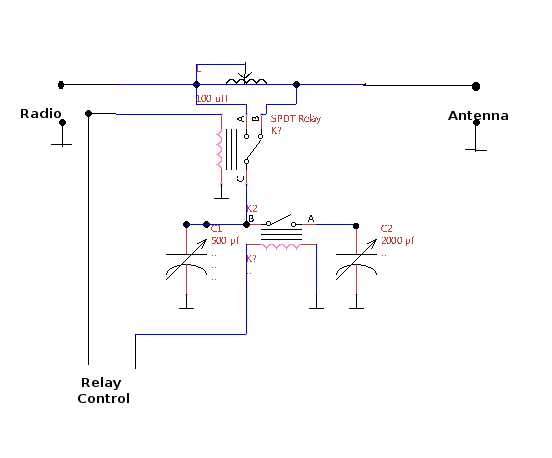
They did not have the amount of capacitance that I needed for my project.Īfter browsing around the Web for a few hours, I found what I was looking for at Peebles Originals (Ref-3): two dual-gang variable capacitors (approximately 500 pf per section). I rummaged through my junk box(es) but only found two old units that I had extracted from superhet receivers some decades ago. Next I had to find two dual-section air variable capacitors.

Furthermore, I wanted the tuner to help me experiment with my many oddball home-brewed HF antennas! I intended to design my homebrew antenna tuner to suit my specific antenna system situation, instead of using a more "universal" design which is a "one-size-fits-all" device normally intended to be useful in "most" circumstances, but generally only with reasonably well-designed HF antennas. The drawback was that their higher "Q" meant that one could not deal with as large a range of antenna system impedances and operating frequencies as one can with a T-network. I learned that, much like L-networks, the efficiency of link-coupled networks was much greater than the popular T-networks. While reading the many articles that were published on the Web and amateur radio books, I was discovering that they had a lower parts count and, in some instances, were less complex to build while remaining capable of transforming a fair range of impedances down/up to 50 ohms - which is the nominal input/output impedance of HF transceivers and amplifiers. Link-coupled network: this is where things got interesting.

I published a short summary of my preliminary findings on tuners in my ebook on HF antenna accessories (see ref.1 below). I studied the most popular antenna tuner networks in search of the best set of compromises for my purposes. And sacrificing as little as possible in performance!.I also wanted the tuner to be easily reproducible. Specifically, I was hoping that my homebrew antenna tuner would improve my signal to noise ratio on the aforementioned bands. My goal was to see if I could improve reception on the lower frequency amateur radio bands such as on 160 meters (1.8-2.0 MHz), 80 meters (3.5-4.0 MHz) and 40 meters (7.0 - 7.3 MHz). Below is the network design that I settled on for my first attempt. The QS1R SDR receiver probably does not need this much pampering to perform exceptionally well, but I was curious nonetheless. On a difficulty scale of 1 to 5, 5 being the most difficult, this is rated at 2.Best Of Breed The Z-Match The FRI-Match My Experiment A Tuning Indicator Transmatch Explained T vs L-Networks T-Networks L-Networks References The tools required are a soldering iron with a small tip, rosin core solder, small side cutters, small Phillips screwdriver, and can be built in an hour or two. Rated for 5 watts continuous, 10 watts PEP, 1.8oz. The built-in absorption bridge design will ensure you do not damage your finals with a poor SWR. wing nuts, tune for the minimum SWR with the integral N7VE LED indicator and you are ready to go. Throw a recommended piece of wire up to a tree, connect it to the tuner with the easy S.S. Our QRPGuys EFHW Antenna with Tuner is the perfect companion for your 40m-15m or 80m outdoor expeditions, restricted apartment location, or just for fun in the backyard on a pleasant afternoon. In a recent 2014 survey, the end-fed half wave antenna (EFHW) is the world’s most popular antenna for those carrying everything they need for remote operations.

Stock availability and shipping volume can delay shipping. Your PayPal receipt is your confirmation that we have received your order.


 0 kommentar(er)
0 kommentar(er)
